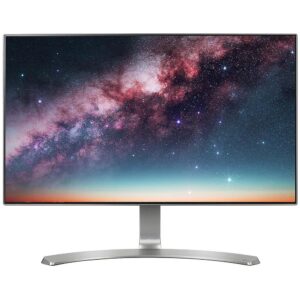IPS display, characteristics of this panel, difference between IPS and Amoled
When it comes to monitor panels, the comparison is always between them, IPS or Amoled displays.

Like any clash and comparison, for each of the two sides we find supporters and detractors, but as in many cases, both solutions offer interesting advantages, but are not perfect. Therefore, the choice between the IPS display and the Amoled one must be the result of an informed comparison.
So let's see what the characteristics of the IPS display , the Amoled panel and the differences between the two are.
In what context did the clash between IPS and Amoled arise?
The battlefield is that of the screen of our portable device. These panels are in fact usually chosen for smartphone and tablet displays, but let's look at them better.
The IPS Display
The IPS display, also known as an LCD or liquid crystal display , is a panel made up of a series of crystals that light up when an electrical signal activates the lighting. The IPS display is therefore a two-layer sandwich, in which the lower part is composed of a layer of light units combined with an upper layer of liquid crystals.
It can be said that the IPS display, as well as the Amoled, owes much of its result to the construction quality of the panel. A high quality IPS panel in fact allows an excellent viewing angle and maintenance of the quality of the display over time, two factors that can be determined and detrimental when the panel is of low quality. In this case, if it is possible to notice it immediately due to the viewing angle, as far as the quality of the crystals is concerned, only time will show it to us, with the risk of finding ourselves with a panel that shows one or more "always active" luminous dots. ”, clearly visible when a white or very light image is shown on the screen.
 The Amoled Display
The Amoled Display
The Amoled panel, as can be seen from the name, is based on Oled technology. This technology involves a double matrix system. In fact, we find an active matrix, composed of organic diodes, which emit light based on the information transmitted by the passive matrix, created through a layer of transistors. The peculiarity of this technology is given by the individual management of the diodes, which can thus manage the individual pixels, thus managing the quantity of light emitted and the state of activity.
This is the main reason why the black is so well done and deep in this type of panel. The diodes are in fact completely turned off, for a deep and neutral black and evident energy savings. From the opposite point of view we find instead a maximum effort when whites are to be created, for greater energy consumption and lower chromatic fidelity. In fact, in the case of bright environments, to compensate for the high level of external light and make images and texts visible, the entire panel is "saturated", leading to the creation of artificial colours, which are not very faithful from a chromatic and nuance point of view. .
The construction quality of this panel is the result of the matrix used. A good quality matrix will in fact lead to a very high and "dense" number of pixels. An economical panel, in which there will be a lower number of Pixels per Inch, will present poor definition, with a decidedly low image quality.
Differences between IPS and Amoled
To best discover the differences between these two types of panels we can try to list the strengths and weaknesses of both.
The IPS display allows excellent color rendering, which can be immediately seen in the sharpness of the images. The high color intensity is also noticeable in the whites which are perfectly balanced and very intense. From a technical point of view, the IPS panel has a truly excellent response time.
However, the IPS panel is not perfect, in fact it consumes more energy than an Amoled panel, also because for the same comparison it requires a more intense level of backlighting than its competitors.
Technically, this panel presents critical issues when trying to integrate sensors (such as the fingerprint sensor) under the display .
The Amoled Display has excellent characteristics regarding the display of blacks and contrast values. This panel is also thinner than the competing one and has lower energy consumption, draining our device's battery less.
From the point of view of the negative characteristics we find above all the production cost, which is much higher than that of an IPS display . The Amoled screen then presents lower visibility, which penalizes this panel in the presence of direct light. The advantage that this panel has with dark tones is negatively offset by the high energy consumption when the colors to be shown are light.
Technically Amoled beats IPS from the point of view of flexibility. The Amoled screen is in fact bendable and flexible, therefore it is the only choice for foldable devices.

IPS and Amoled displays, where we find them
The IPS display is used quite homogeneously in mid-range and high-end devices. The Amoled panel, on the other hand, also due to its higher production cost, is almost the exclusive prerogative of high-end devices.
IPS or AMOLED display, which one to choose
Technically the comparison shows a clear winner, especially considering that it can still evolve. The winner is the Amoled screen, which has the production cost as the biggest problem. A "defect" that will certainly decrease as the number of pieces produced and the technologies to produce them evolve.
This doesn't mean that Amoled is the obvious choice. It's true that this panel is now the most chosen by medium and high-end manufacturers, but IPS displays still have a lot to give. The final choice therefore becomes a subjective factor, left to the user who will consider the panel as part of a complete device and not just an end in itself. The starting quality in both panels is then fundamental. Therefore, not only the type of panel but also its quality will have to be considered in any comparative comparison.







